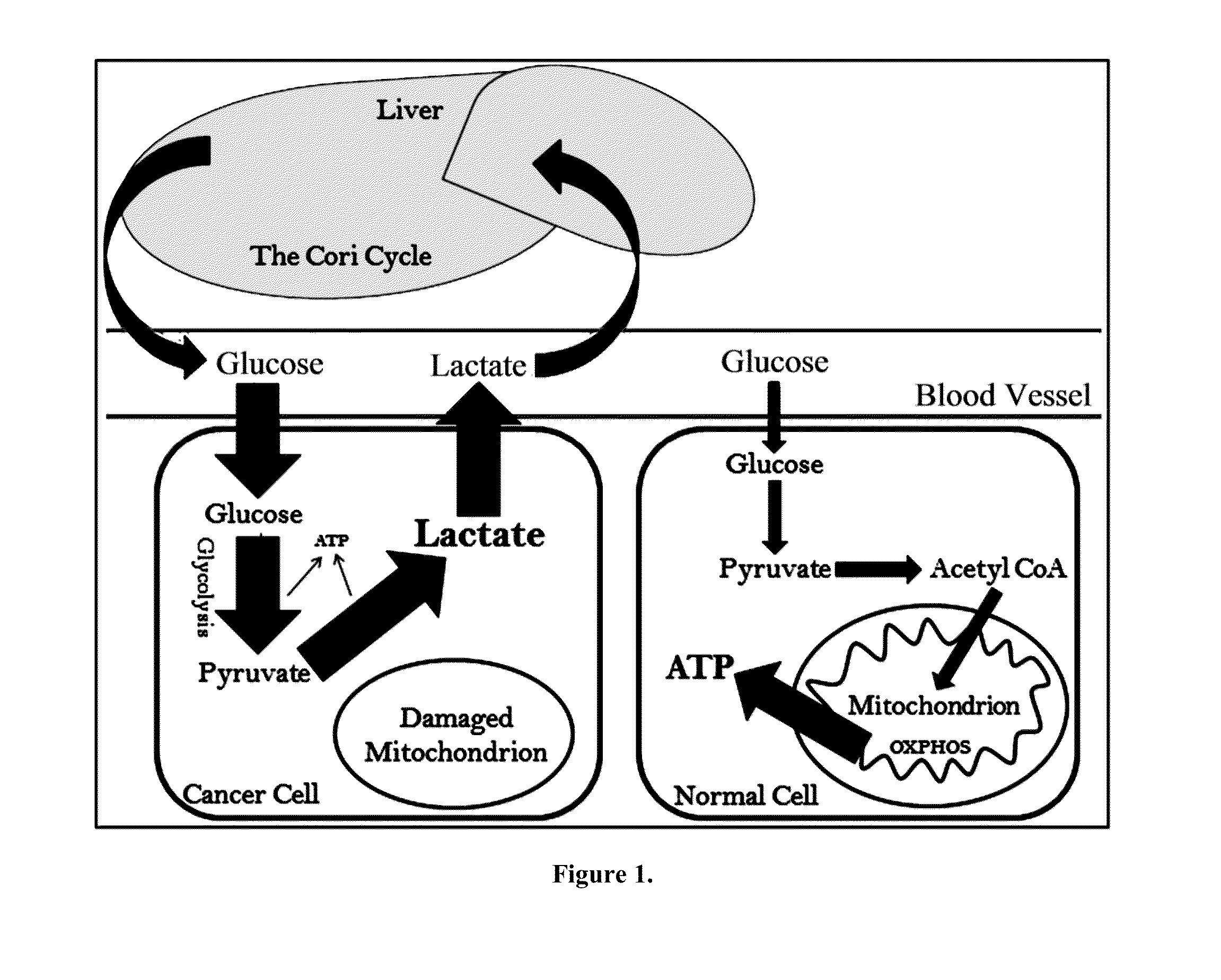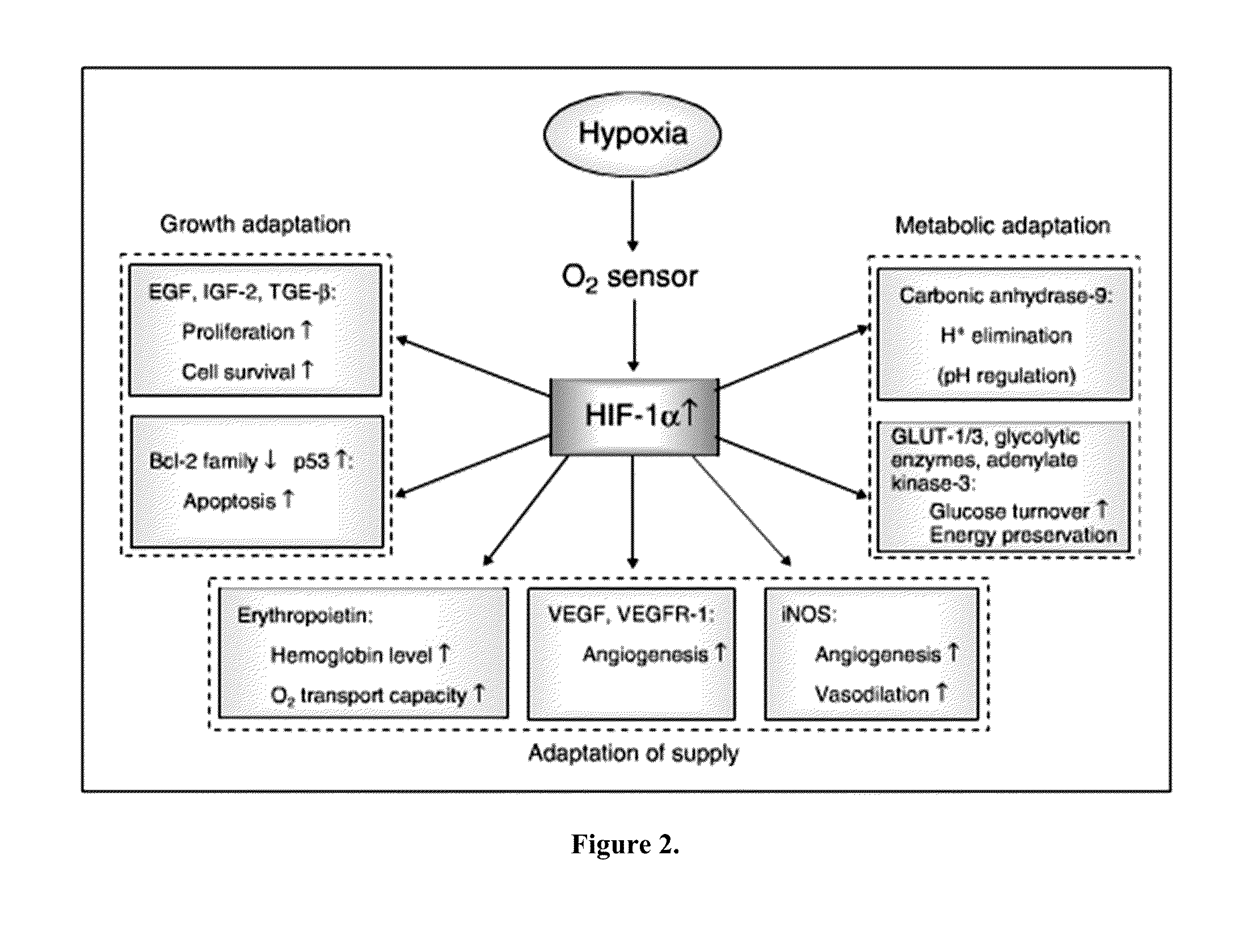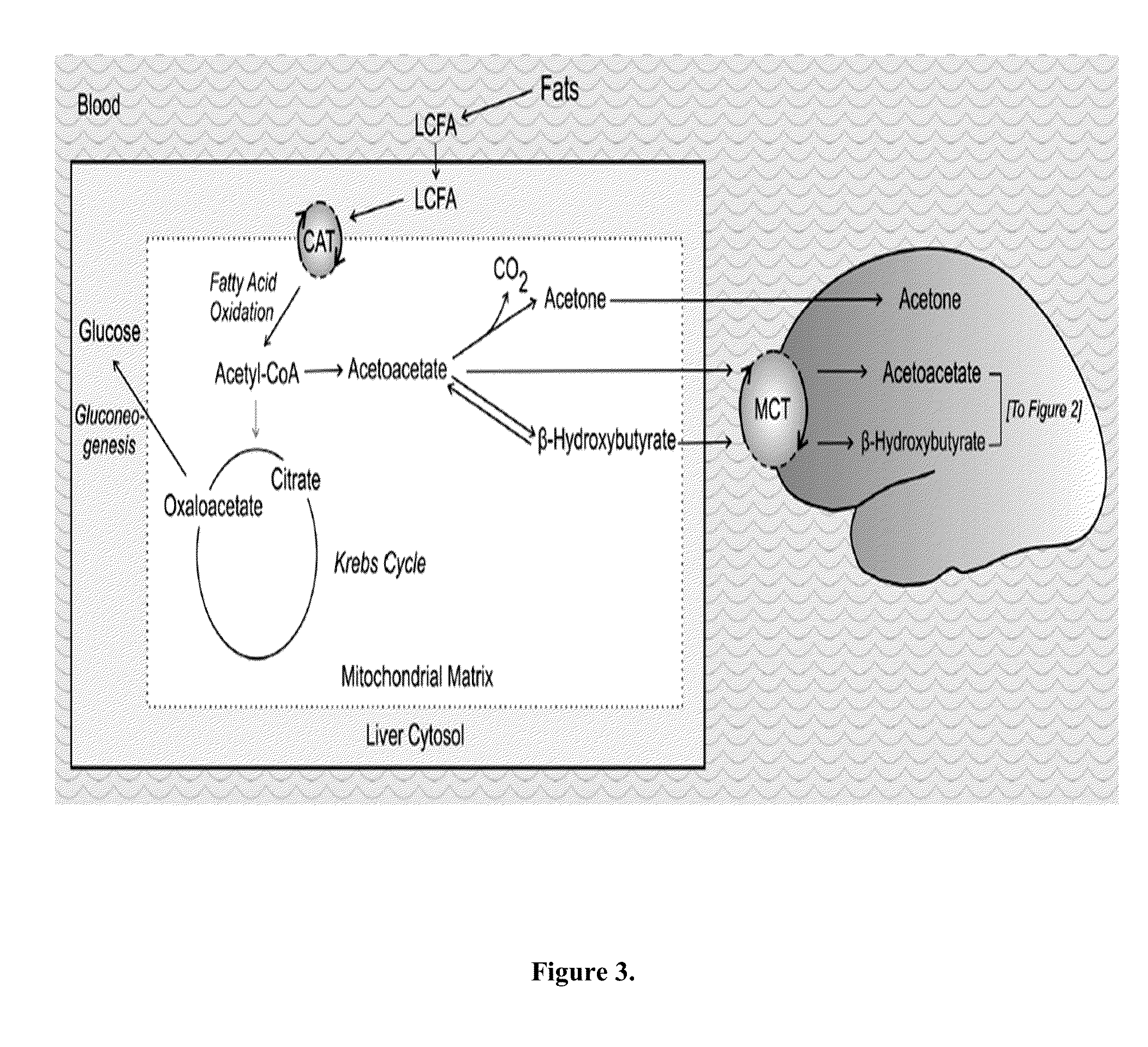Cancer with metabolic therapy and hyperbaric oxygen
a metabolic therapy and oxygen therapy technology, applied in the field of cancer with metabolic therapy and hyperbaric oxygen, can solve the problems of cns-ot and no effective mitigation strategy, and achieve the effects of increasing the likelihood of seizures, effective model for assessing neuroprotective potential, and increasing the production of reactive oxygen species
- Summary
- Abstract
- Description
- Claims
- Application Information
AI Technical Summary
Benefits of technology
Problems solved by technology
Method used
Image
Examples
example 1
[0104]Effect of ketones on superoxide production in neurons treated with Aβ1-42 and HBO and cell viability of U87MG cells was examined Primary dissociated neuronal cultures of the hippocampus and cortex were acquired from Brain Bits LLC, to increase time efficiency and to minimize cost associated with purchasing rats. Hippocampal or cortical tissue from Brain Bits (shipped in Hibernate®) were enzymatically and mechanically dissociated via pipette trituration. Neurons were plated on 12 mm glass coverslips and allowed to adhere for 1-2 hrs in an incubator maintained at 9-20% O2 in a humidified atmosphere. Cultures were maintained in media purchased from Brain Bits, including NbActiv1® and NbActive4. After incubation for 7 to 21 days the neurons were placed in the cell chamber on the stage of the hyperbaric imaging system and gently superfused (0.5 ml / min) with aCSF equilibrated with the test level of 02. For experimental protocols cell cultures were maintained in artificial cerebrospi...
example 2
[0116]Anticonvulsant effect of supplemental ketones was tested in rats exposed to hyperbaric oxygen (5 ATA O2). The effects of ketone esters (KEs) in preventing CNS-OT in rats were assessed before, during and after HBO2 exposure by measuring various parameters.
[0117]Adult male Sprague-Dawley rats (n=60) rats (300-450 grams; 3 to 6 month old) were obtained from Harlan, anesthetized in 3-5% isoflurane (in 02) and implanted with a 4ET radio-transmitter (Data Sciences International, DSI) using sterile surgical technique. The rat chamber was ventilated with pure O2 while the hyperbaric chamber, containing the radio-receiver (DSI), was pressurized in parallel with air to 5 atmospheres absolute (ATA). One pair of leads (positive and negative poles) was implanted in the costal diaphragm at the junction with the abdominal wall for diaphragmatic electromyogram (dEMG) signals, one pair of electrodes was inserted in the pectoral muscle to acquire electrocardiogram (ECG) data, and two pairs of w...
example 3
[0130]Blood ketones and glucose levels were examined following administration of water,
[0131]KE and BD. The ketone diester (dKE) was found to cause a rapid and sustained increase in total blood plasma ketones. Blood plasma concentration of total ketones (BHB+AcAc) levels in adult Sprague Dawley rats (n=6 rats / group; 250 to 350 g) semi-fasted (18 hrs) and gavaged with 3 mL (˜10 g / kg) of water (control), BD-AcAc2) or BD are illustrated in FIG. 15. Blood was collected and processed as described in the previous example.
[0132]Ketone measurements were taken at 30, 60, 120, 180 and 240 minutes. Blood plasma was treated with sodium borodeuteride (NaB2H4) to stabilize ketone concentration and then assayed by GC-MS. The rapid rise relating to blood ketones from BD-AcAc2 is due primarily from rapid desterfication in blood and tissues. Desterification of BD-AcAc2 releases 1,3-butanediol, which is metabolized in the liver to BHB.
[0133]FIG. 16 shows blood plasma levels of BHB in rats (n=6 rats / gr...
PUM
| Property | Measurement | Unit |
|---|---|---|
| Fraction | aaaaa | aaaaa |
| Fraction | aaaaa | aaaaa |
| Fraction | aaaaa | aaaaa |
Abstract
Description
Claims
Application Information
 Login to View More
Login to View More - R&D
- Intellectual Property
- Life Sciences
- Materials
- Tech Scout
- Unparalleled Data Quality
- Higher Quality Content
- 60% Fewer Hallucinations
Browse by: Latest US Patents, China's latest patents, Technical Efficacy Thesaurus, Application Domain, Technology Topic, Popular Technical Reports.
© 2025 PatSnap. All rights reserved.Legal|Privacy policy|Modern Slavery Act Transparency Statement|Sitemap|About US| Contact US: help@patsnap.com



